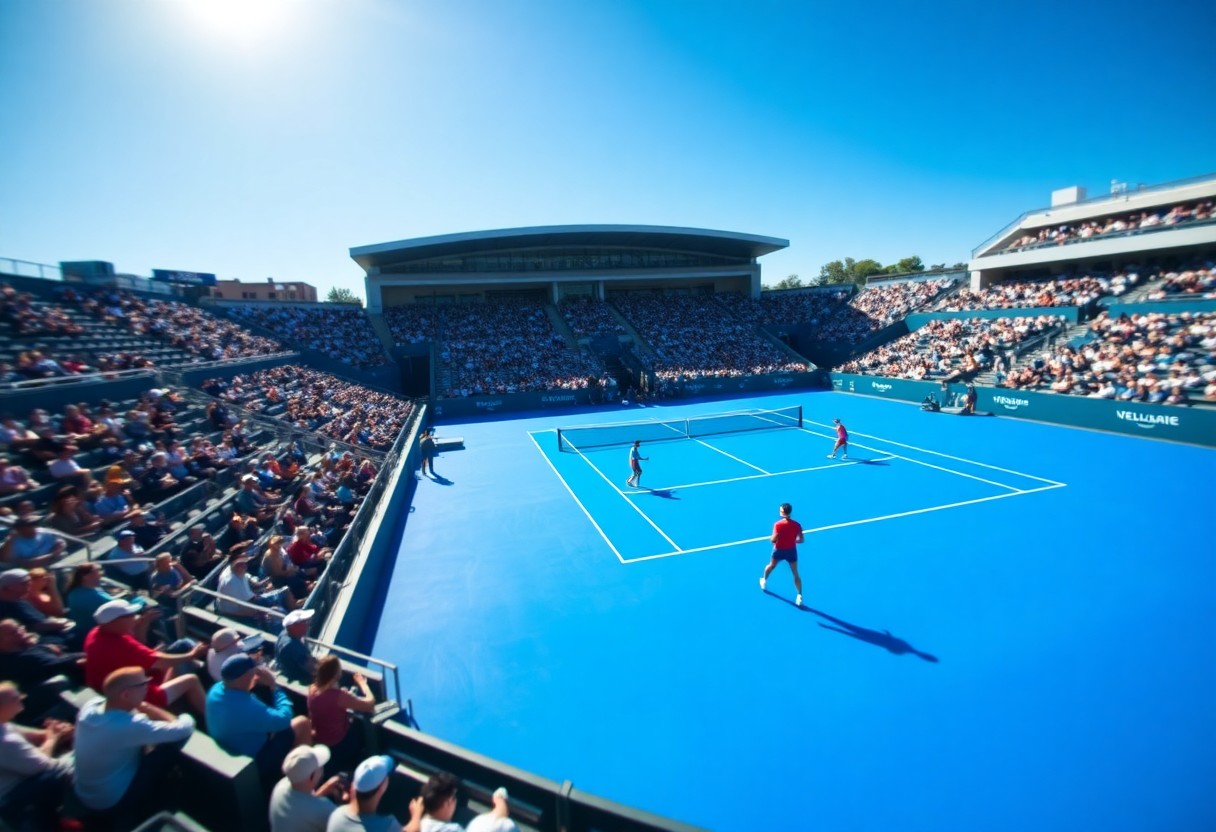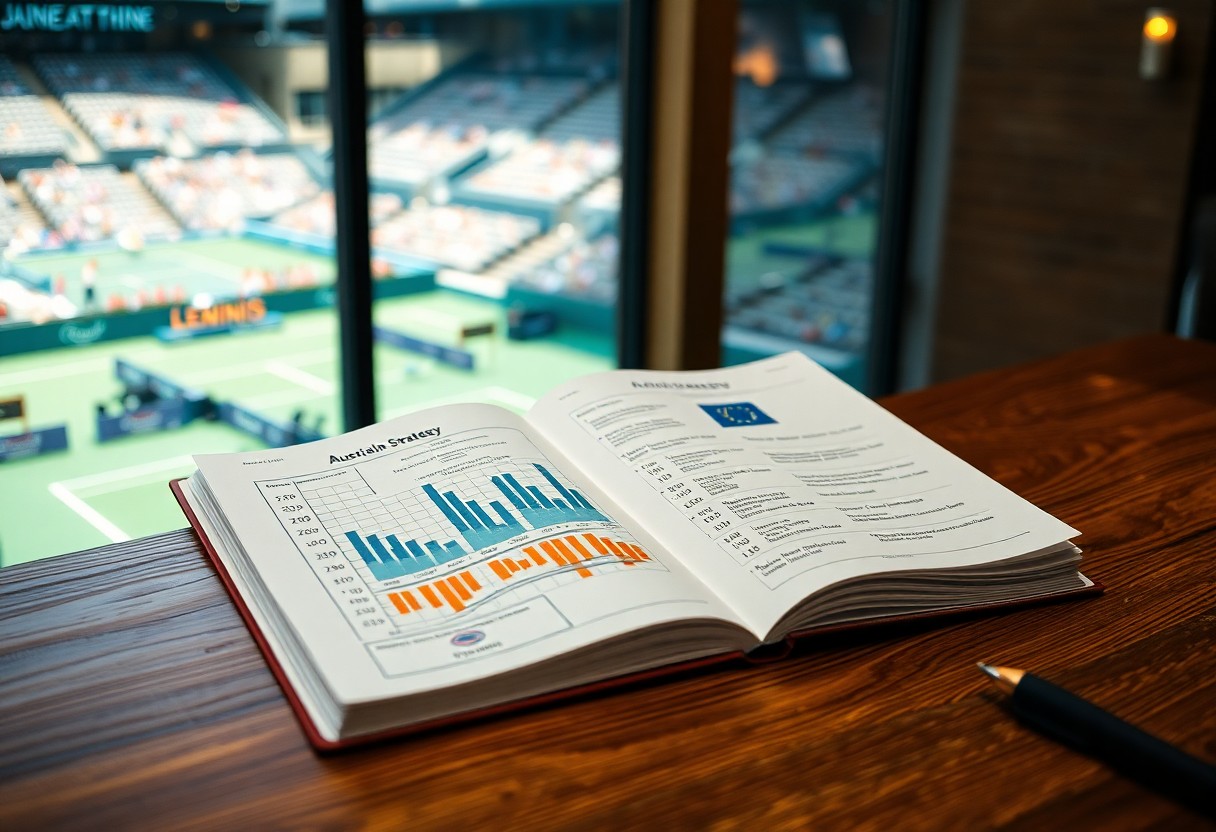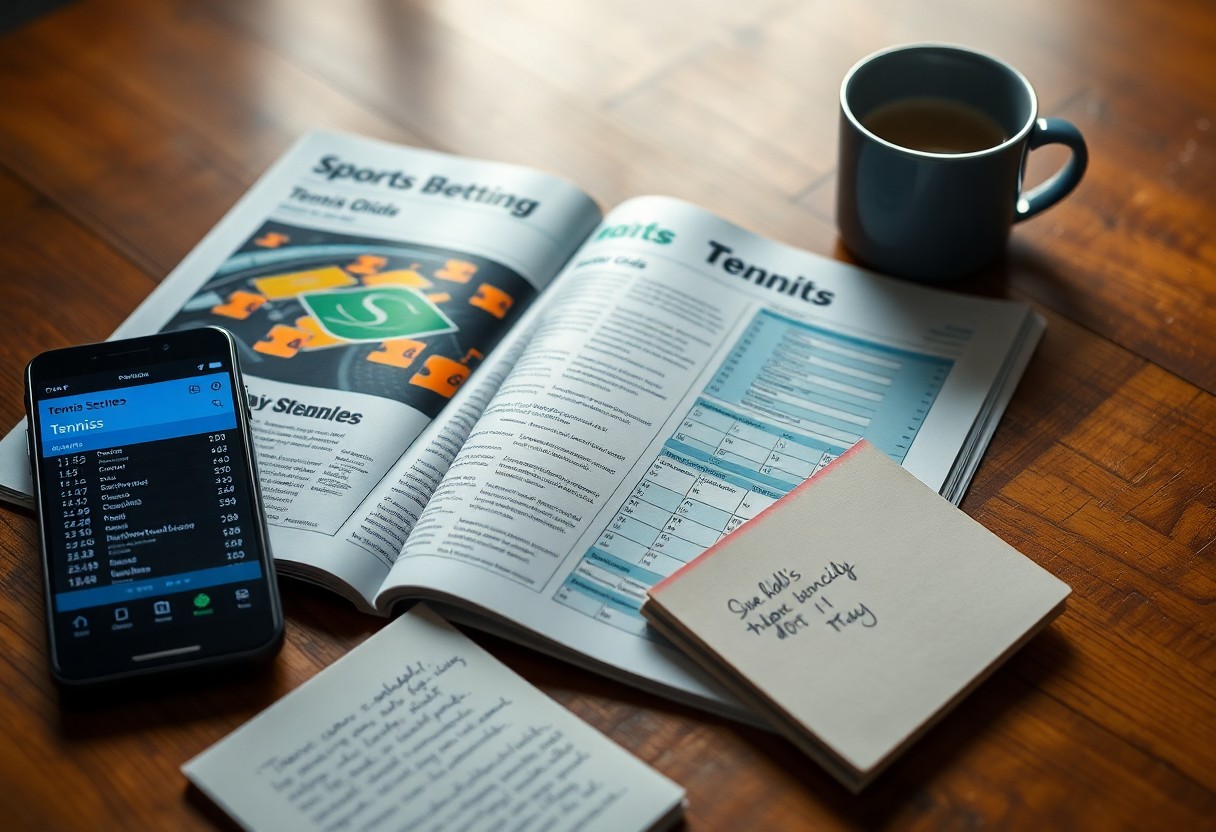Australian courts are known for their unique hard surface, which significantly affects players’ performance and strategies during the Australian Open. This type of surface is fast and firm, allowing for quick rallies and less time for players to react, thus favoring aggressive playstyles. The impact of heat and humidity also plays a vital role in match conditions, demanding that athletes adapt quickly to remain competitive. Understanding these factors can provide insights into the game dynamics and the challenges players face on the Melbourne courts.
The History of the Australian Open Surface
The Australian Open has undergone significant transformations since its inception in 1905. Originally played on grass courts, the tournament saw a shift to hard surfaces in the late 1980s, aiming to enhance the quality of play and accommodate various playing styles. In 2008, the introduction of the Plexicushion surface marked a pivotal change, providing improved cushioning and consistency while also featuring a faster pace, further influencing match dynamics. Over the decades, these surface changes have not only shaped the game but have also become a defining characteristic of the Australian Open experience.
Evolution of Court Surfaces
From grass to hard courts, the evolution of Australian Open surfaces reflects broader shifts in tennis. The transition started as a response to climatic conditions and the need for a year-round playability. In the early 1980s, the tournament experimented with different materials before establishing an official hard court surface in 1988. By selecting Plexicushion in 2008, officials catered to modern player demands for consistency and injury prevention, crafting an environment conducive to high-performance tennis.
Impact on Player Performance
Player performance has been notably influenced by the Australian Open’s hard court surface. This surface type benefits powerful, aggressive players who can leverage their strength for quicker serves and groundstrokes. Conversely, it challenges players who rely on speed and finesse, necessitating adjustments in strategy and technique. The quicker rebound of the ball encourages longer rallies, demanding athletes to maintain peak physical conditioning and adaptability throughout their matches. The variance in surface speed also influences match outcomes, often favoring players who adapt quickly to the conditions.
Consider the case of Novak Djokovic, who has thrived on the Plexicushion surface, securing multiple titles due to his powerful baseline game and ability to control play. With 12 Australian Open titles to his name, he illustrates how the surface can elevate certain playing styles while testing others. On the opposite end, players less accustomed to hard courts, such as traditional grass court specialists, often face challenges in adjusting their gameplay. Elements like bounce consistency and speed on hard surfaces demand meticulous preparation and an understanding of how to maximize performance to win in this unique setting.
The Characteristics of Australian Open Courts
The courts at the Australian Open, located at Melbourne Park, predominantly feature a hardcourt surface that impacts player performance and strategy. This installation consists of an acrylic layer over a concrete base, producing a relatively fast surface that lends itself to aggressive playstyles. The courts are known for their unique blue color, which aids visibility and has become a signature of the event. Player movement and ball bounce differ distinctly from clay or grass, demanding specialized skills and techniques tailored to these conditions.
Hardcourt Surface Analysis
The hardcourt surface of the Australian Open promotes a consistent ball bounce, contributing to a faster pace of play. Players often find opportunities for powerful serves and groundstrokes due to the reduced friction. However, the surface can also lead to increased injury risks, particularly for the knees and ankles, as the rigid concrete base offers minimal shock absorption. Hence, effective footwork and strategic court coverage are crucial components for success on these courts.
Weather Conditions and Their Effects
Melbourne’s unpredictable weather poses a significant challenge during the Australian Open. With temperatures soaring above 40°C (104°F) and sudden rain showers, players must adapt rapidly to survive and excel. The extreme heat can lead to dehydration and fatigue, impacting performance and match outcomes. Additionally, humidity levels affect court speed; matches played in high humidity tend to see a slower ball movement, altering player tactics.
Weather fluctuations can dramatically shift the dynamics of matches. For instance, the notorious “Australian summer” can result in intense heat waves, compelling tournament organizers to implement heat rules to protect player welfare. Players often have to manage their stamina throughout matches that can stretch into grueling four or five sets. Conversely, unexpected rain delays can lead to slippery conditions that require quick adjustments in gameplay strategies. Hence, understanding weather patterns is crucial for athletes aiming to secure success at the Australian Open.
Player Adaptation to Surface
Success at the Australian Open demands acute adaptation from players as they navigate Melbourne’s unique hard courts. This surface, characterized by its consistent bounce and speed, rewards players who blend power with finesse. An understanding of court conditions—such as temperature and humidity—can significantly influence match performance, with seasoned competitors often adjusting their tactics mid-game based on how the court plays on any given day.
Top Players’ Strategies
Top players often dissect the surface’s nuances to optimize their game plans. Techniques may include using a mix of aggressive baseline shots and strategic net play to exploit opponents’ weaknesses. For instance, champions like Novak Djokovic and Ashleigh Barty thrive by actively varying their shot selection and maintaining rhythm to outmaneuver their adversaries on this fast surface.
Training and Preparation
Preparation for the Australian Open starts well before players step on the court. Training routines specifically tailored to account for the unique surface involve incorporating high-intensity drills that mimic match conditions, focusing on footwork, speed, and shot accuracy.
In the lead-up to the tournament, players engage in practice sessions that emphasize quick movements and endurance, crucial for the fast pace of matches. They also analyze past performances on hard courts to pinpoint areas for improvement. For example, Kyrgios often incorporates practices that stress his serve-and-volley game while adjusting his baseline tactics, aiming for a balance between power and control. Mental conditioning helps players adapt to the pressure of high-stakes matches, ensuring they remain calm and focused throughout the tournament. This comprehensive approach fosters a strong connection to the surface and enhances overall performance.
Key Matches Influenced by Court Surface
Notable Championships
Several championships at the Australian Open have been significantly shaped by the court surface. For instance, Rafael Nadal’s victory in 2009 showcased his unparalleled adaptability, defeating Roger Federer in a grueling five-set match on a slower hard court that favored his baseline game. Similarly, Ashleigh Barty’s win in 2020 demonstrated how local knowledge of the court’s unique characteristics can bolster performance, enabling her to secure her first Grand Slam title.
Memorable Moments and Matches
Noteworthy matches often hinge on the distinctive qualities of Melbourne’s courts, leading to unforgettable moments. The gripping 2012 final between Novak Djokovic and Rafael Nadal, which lasted nearly six hours, highlighted the surface’s ability to extend rallies and test players’ endurance. These conditions allowed Djokovic to craft a masterclass in stamina and strategy, eventually clinching victory and marking one of the longest finals in Grand Slam history.
The 2017 Australian Open final further exemplified how the court influences match dynamics. Roger Federer faced off against Rafael Nadal in a highly anticipated showdown that reignited their storied rivalry. The faster court surface complemented Federer’s attacking style, allowing him to execute precise serve-and-volley tactics that ultimately led to his victory. These instances illustrate how the Australian Open’s playing surface not only impacts strategies but can also create legendary narratives in the sport of tennis.
Comparison with Other Grand Slam Surfaces
| Surface | Characteristics |
|---|---|
| Clay | Slower, increases rally length, favoring baseline players. |
| Grass | Fast, low bounce, advantages serve-and-volley tactics. |
Clay vs. Hardcourt
Clay surfaces slow down the ball and produce higher bounces compared to hardcourts, favoring players with strong baseline games who excel in extended rallies. Experienced clay court specialists like Rafael Nadal often dominate these surfaces, utilizing their endurance and strategic shot-making to outlast opponents.
Grass vs. Hardcourt
Grass courts, known for their rapid play and low bounce, reward aggressive serve-and-volley strategies, contrasting sharply with hardcourt surfaces that provide consistency in bounce and speed. This difference influences player tactics, as seen in the success of players like Roger Federer, whose game excels on grass.
Grass courts significantly alter the game’s dynamics, with the surface yielding unpredictable bounces that challenge players’ footing and shot precision. The quickness of grass favors powerful servers and agile net players, while hard courts support a more universal playing style. Players adapt by focusing on sharp serves and quick points on grass, while hardcourts encourage longer rallies and strategic play, allowing a wider array of styles to succeed.
Future Developments in Court Technology
Emerging court technologies promise to reshape the future of the Australian Open, potentially enhancing player performance and spectator experience. Innovations are being tested to optimize conditions for players, improving factors like grip, bounce consistency, and weather adaptability. As advancements in synthetic materials and smart technologies evolve, the tournament’s famed hard courts may soon feature systems that can self-adjust to environmental changes or player needs, pushing the boundaries of traditional court surfaces.
Innovations in Material
New materials are being explored to create more responsive and resilient court surfaces. Innovations like advanced polymers and nano-coatings can enhance shock absorption and prevent surface wear, allowing for a more consistent playing experience. These materials not only aim to improve player safety by reducing fatigue and injury risk but also promise to maintain optimal playing conditions regardless of weather conditions.
Potential Changes for Players
Players may experience significant changes in their gameplay due to advancements in court technology. These innovations could lead to alterations in playing styles, as faster surfaces promote aggressive strategies while enhancing player movement efficiency. Additionally, with improved grip and bounce properties, athletes may find themselves adapting their training regimens to better align with the evolving demands of the court.
As court technology continues to advance, players will need to recalibrate their training and strategies to match the nuanced playing conditions. For instance, a surface that offers better grip could lead players to take more risks on their shots, impacting how they approach crucial points. Furthermore, those who can swiftly adapt will enjoy a competitive edge, as techniques and tools evolve in tandem with these innovations. Balancing offensive tactics with the ability to control the game will become increasingly important, shaping the future generation of tennis talent at the Australian Open.
Conclusion
Summing up, the unique hard court surface of the Australian Open significantly affects player performance and match dynamics. With its medium pace and consistent bounce, the Melbourne courts favor both powerful baseline play and strategic net approaches. This environment challenges players to adapt their techniques and strategies, often leading to high-intensity matches. Understanding these surface characteristics is vital for athletes and fans alike, as they shape the competition and overall playing experience during this prestigious tournament.
FAQ
Q: What type of surface is used at the Australian Open?
A: The Australian Open is played on a hard court surface, specifically Plexicushion, which provides a consistent bounce and performs well under the variable Melbourne climate.
Q: How does the hard court surface affect player performance?
A: The hard court surface allows for faster gameplay compared to clay courts, often favoring aggressive baseline players who rely on strong serves and powerful groundstrokes.
Q: In what ways do Melbourne’s weather conditions impact the matches played on these courts?
A: Melbourne’s fluctuating temperatures and humidity levels can affect court speed and player stamina, influencing match dynamics and strategies throughout the tournament.




